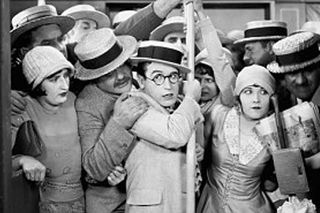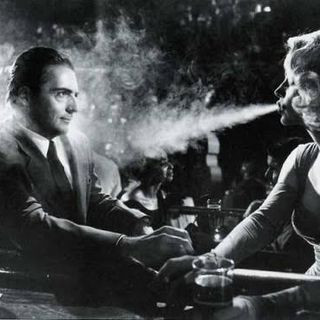
Here’s How You Cope With a Fear of Crowded Spaces
During a panic attack, don’t try to control your breathing.

Crowds are uncomfortable spaces to be in. Multiple individuals giving out various sights, sounds, and odors at once is bound to make an individual want a breather, and even cause sensory overload — or worse, panic attacks.
However, though uncomfortable, crowds are an integral part of the human experience — whether we take trains and metros as a part of our daily commute, enjoy gathering for concerts, or decide to dissent when the country we live in happens to pass an unconstitutional, undemocratic bill that births rage and the necessity to protest. In such situations, how does one cope with the phobia of a crowded space they cannot or do not want to avoid?
A phobia is “a persistent, excessive, unrealistic fear of an object, person, animal, activity or situation,” according to Harvard Health. Phobias could occur due to brain malfunctions, genetic influences, or previous traumatic events. Phobias, according to The Swaddle’s explainer, could be specific — like fear of closed spaces — or social, like the fear of public judgment or agoraphobia, that is, the fear of uncontrollable situations from which there is no or difficult escape.
Suffering from certain phobias like agoraphobia or claustrophobia (the fear of closed spaces) might make one feel trapped — which can impede one’s ability to function properly in crowded spaces, which do not have much area of movement and are hard to exit. If the phobia is activated, it might lead to a panic attack, characterized by symptoms like palpitations, breathing troubles, dizziness, chest pain, shakiness or numbness, excessive sweating, upset stomach, sudden chills or flushing, or a feeling of complete loss of control and even a fear of death, according to the Mayo Clinic.
While long-term treatment for phobias is best done with a psychotherapist, here are some ways in which one could prevent the symptoms of fear and anxiety in crowded spaces.
Related on The Swaddle:
Understanding Phobias: What They Are and Why They Happen
Go prepared to crowded spaces
In case a person knows they have to move around in a crowded space, like a protest or concert, it always helps to go in prepared. It helps to carry a bottle of water and snacks and to familiarize oneself with the exit points of a crowded area before entering, in case light-headedness and dizzyness make searching for an exit difficult later.
Tell a friend that you’re not okay
Stigma and embarrassment play a big part in elevating panic attacks in public spaces, according to Dr. Kristin Bianchi, a psychologist at Maryland’s Center for Anxiety & Behavioral Change in the U.S. Bianchi told Healthline that her clients fear drawing attention to themselves or making a scene in the midst of a panic attack. “They often report worrying that others might think that they’re ‘crazy’ or ‘unstable.'”
In such a situation, having a phobia might make one feel too embarrassed to bring it up due to stigma and peer pressure. However, it’s best to both pre-emptively tell a trusted friend about the phobia and immediately inform them in case one senses anxiety or a potential panic attack brewing.
Save yourself first during a crisis
In case of a crisis — like a stampede or a riot — that could significantly worsen your phobia, an individual’s response is often to find the people they arrived with. However, this is often not a good idea. “If you find yourself stuck in a crowd and there’s violence, the natural reaction is to try and find the people you came with. But unless it’s a small child, I strongly suggest you let them look after themselves and head straight for the nearest place of safety — a café, a hotel, a bar — and sit there till it all calms down,” Allan Jones, a crowd behavior specialist, told Mel Magazine.
Jones also added that keeping people updated about each other’s whereabouts via text message and other tracking apps (like Google Maps and WhatsApp live locations) is a good idea. “It’s hard to call someone with all the noise. Better to text.”
Do not take deep breaths
An individual’s first response to becoming aware of their panic attack is often to try to calm down or take a deep breath. This is not a good idea because of two reasons: First, ironic rebound, i.e. when one tries to suppress certain thoughts only to compulsively focus on the exact thoughts they want to avoid. Second, panic attacks tend to speed up breathing, which when combined with deep breathing increases the risk of hyperventilation.
“It’s not because they have a lack of oxygen, it’s because they’re exhaling too much air,” Alicia Meuret, a researcher who researched respiratory mediators for panic attacks and discovered the above, told LiveScience. Ideally, stick to shallow breathing until the body calms down.
Keep your senses awake
To ground oneself during a situation in which it feels like there’s a loss of control, it helps to engage with one’s senses. Thinking about what one sees, smells, touches, and focusing on the senses, rather than the irrational thoughts in one’s head, could help beat claustrophobia, agoraphobia and any resultant panic attacks.
“When you really sense what is going on in the here and now, you will realize that in most ‘nows,’ there isn’t much going on,” according to Dr. Scott Bea of the Cleveland Clinic.
While these pointers may help manage one’s phobias of small, constricted spaces like standing amid large crowds of people, they are not the end all. The best way to manage one’s phobias would be to speak to their mental health provider and receive either psychotherapy or exposure therapy, during which an individual with a phobia is exposed to a non-threatening situation that triggers their fear and helps them overcome it. Phobias may seem uncontrollable and odd, but with the right precautions, one can mitigate their potency and how they affect individual freedoms.
Aditi Murti is a culture writer at The Swaddle. Previously, she worked as a freelance journalist focused on gender and cities. Find her on social media @aditimurti.
Related


How Secondhand Smoke Is Harmful In the Long and Short Term
